Window Replacement Costs: New windows can cost anywhere from $100 to $2,500 per window, based on a January 2025 poll of 1,000 homeowners. Most homeowners spend about $554 for each window replacement. Complete home projects usually run between $2,678 and $13,840, depending on how many windows need replacement.
Replacing your windows is one of the most important investments you can make for your home. Energy Star shows that energy-efficient windows help cut heating and cooling costs by up to 13%. On top of that, these windows give homeowners a 67.1% return on investment when they sell their homes, according to Remodeling Magazine’s 2024 Cost vs. Value report. This explains why 43% of homeowners we surveyed chose energy savings as their main reason to buy new windows.
This piece will get into what drives window replacement costs, show you pricing for different window types and materials, and help you discover the full potential of your window upgrade project.
Average Window Replacement Costs in 2025
Window replacement projects cost different amounts based on several factors. Homeowners in 2025 need to look beyond just the per-window cost. The full picture includes how costs scale up for entire homes and the split between materials and labor.
National average cost per window
Recent surveys show homeowners spend between $300 and $2,500 per window for replacement. Most projects fall into a smaller range. A newer study, published in January 2025 by surveying 1,000 homeowners found the average replacement window costs $554. The typical range runs from $338 to $897.
Different industry sources give slightly different numbers. Some put the average at $753 per window, while others say $750 per window. These differences come from varying methods and window types included in each analysis.
The core team suggests three price tiers to help plan your budget:
- Low-end projects: $150-$400 per window
- Mid-range projects: $400-$700 per window
- Premium projects: $700-$1,200+ per window
Cost range for full-home replacement
Topic: Window Replacement Costs
The total cost to replace all windows depends mostly on how many windows you have. Current data shows homeowners pay between $2,678 and $13,840 for homes with 5-25 windows.
Here’s a breakdown by window count to help you plan:
| Number of Windows | Typical Price Range |
|---|---|
| 6-8 | $4,500-$6,000 |
| 8-12 | $6,000-$9,000 |
| 12-16 | $9,000-$12,000 |
| 16-20 | $12,000-$15,000 |
| 20-24 | $15,000-$18,000 |
| 25+ | $18,000-$20,000+ |
The average home’s project cost lands between $3,445 and $11,830, with most paying around $7,355. A typical 3-bedroom home needs $6,000 to $12,000 for complete window replacement.
Labor vs. material cost breakdown
Materials and labor costs explain why different contractors give such varied quotes. Materials make up about 85.7% of the total cost, while labor takes 14.3%.
Standard installations cost $100 to $300 per window in labor. This jumps to $600 or more per window for complex jobs that need structural changes or have tough access points.
Some contractors charge $55 to $65 per hour instead of per window. Others use day rates, which can change the per-window cost a lot, especially in smaller projects.
Labor sometimes costs more than materials. A study of bay window installations found labor took 60% of the total cost, leaving materials at 40%. Complex window styles take more time and skill to install right, which drives up labor costs.
Location affects labor costs too. Areas with high living costs and strong demand charge more for installation.
Cost Breakdown by Window Type
Image Source: Asher Lasting Exteriors
Window styles play a huge role in replacement costs. Each type comes with its own features, benefits, and price range. This guide helps homeowners plan their window projects for 2025 with realistic budget expectations.
Double-hung
Double-hung windows are the most popular choice in new homes today. These windows have two sashes that move up and down. The national average cost to replace a double-hung window replacement runs $429 to $915 per window. This makes them a budget-friendly option compared to other styles.
The price of double-hung windows depends on several things:
- Size (24×36 inches is standard)
- Frame material (vinyl costs less)
- Glass options (single vs. double-pane)
- Brand selection
A standard-sized double-hung window costs about $555 for materials. Installation adds $150 to $300 to your bill. High-end wood frames can cost up to $3,100, while basic vinyl options start at $250.
Casement
Casement windows open like doors using a hand crank. They usually cost $597 to $1,273 per window. These side-hinged windows work great in kitchens and bathrooms where you need good airflow.
Brand choice affects the price quite a bit. Simonton vinyl casement windows cost around $400 installed. Premium options like Andersen 100 Series run about $550 installed.
Frame materials are a big part of the cost. Vinyl frames range from $200 to $750. Fiberglass costs more at $535 to $1,575. Wood frames run $290 to $2,000, giving you classic looks at a higher price.
Bay and bow
Bay windows use three panels that stick out from your house and cost $1,732 to $3,690. Bow windows have four or more curved panels and run $1,810 to $3,859.
These windows need complex installation. Labor makes up 40% to 60% of bay window projects because of structural needs. You’ll need multiple installers and sometimes house modifications.
Size is the biggest cost factor. Bay windows cost $100 to $150 per square foot. A small 4×3-foot bay window runs about $1,400. Larger 6×6-foot versions cost up to $5,400.
Picture and fixed
Picture windows give you clear views without moving parts. They cost $609 to $1,298 on average. The simple design makes them cheaper than similar-sized operating windows.
Size makes a big difference in price. A small 3×2-foot picture window costs about $230. A large 6×5-foot version runs $1,050. Installation adds $70 to $300 based on difficulty and location.
Picture windows can’t open but they’re great for energy savings. The 2025 Cost vs. Value Report shows these windows are worth the investment, especially in homes with nice views.
Sliding and awning
Sliding windows move side-to-side on tracks and cost $775 to $1,652 each. Frame choice affects price a lot. Vinyl frames start at $250 to $350. Composite frames cost $500 to $600.
Awning windows hang from the top and open out. They cost $477 to $1,107. Their compact size keeps costs down. These windows give you a 67.5% return on investment according to the 2025 Cost vs. Value Report.
Different brands have different prices. Andersen 200 Series vinyl sliding windows cost about $435 installed. Simonton Prism awning windows run around $325 installed.
Specialty and custom
Custom and specialty windows cost more because they’re not standard sizes or shapes. You’ll pay 25-75% more than regular windows.
Custom prices change based on:
- Shape (arched, circular, geometric)
- Size
- Special glass
- Designer hardware
- Energy features
The national average for standard windows is $554. Custom windows often cost more than $1,000. Premium installations can reach $2,500 or higher depending on what you want.
How Frame Material Impacts Cost
Image Source: Ring’s End
Frame material plays a huge role in your window replacement costs. Each material comes with its own benefits, lifespan, and price tag that you should think over before making your choice.
Vinyl
Vinyl windows are the most affordable option out there, with prices ranging from $287 to $1,081 per window. People love these windows not just for looks, but for practical reasons. They’re easy to maintain and won’t scratch, rust, or corrode. The energy efficiency is pretty good too. You can get standard-sized windows for as little as $285 to $608 before installation. Remodeling Magazine’s 2025 Cost vs. Value Report shows vinyl gives you the best bang for your buck with a 67.1% ROI when you sell your home.
Wood
Wood frames cost more, running between $481 and $1,616 per window. These classic beauties look amazing but they’ll cost you more upfront and take more work to maintain. Your choice of wood makes a big difference in price. Pine is the budget-friendly pick at $650 to $900 per window, while fancy teak runs $1,400 to $1,900. Cherry and mahogany sit right in the middle at about $800 to $1,100. Replacing all your home’s windows with wood frames typically costs $6,500 to $32,500, making it one of the priciest options.
Aluminum
Aluminum frames hit the sweet spot on pricing at $239 to $794 per window. Most people pay between $400 to $850, which lands right between vinyl and wood prices. These frames are tough and last up to 50 years without much fuss. The biggest drawback is heat transfer, which can make them less energy efficient unless they have thermal breaks built in.
Fiberglass
Fiberglass windows are a premium choice that costs between $460 and $1,499 per window. More people choose fiberglass these days because it lasts forever and saves energy. These frames insulate 15% better than vinyl and can last up to 50 years. They work great in places with crazy weather since they don’t warp or crack from temperature changes.
Composite
Composite frames mix wood fibers and polymers, and they’ll run you between $550 and $1,556 per window. Basic options start at $300 to $500 installed, while the fancy stuff goes for $800 to $1,200. Companies like Andersen make their own special blends – their Fibrex material uses 40% wood and 60% vinyl. These frames are slimmer than others, so you get more glass and light. This really helps with smaller windows where thick frames would block your view.
Other Factors That Affect Window Replacement Cost
Image Source: Norman Builders
Window replacement costs depend on more than just the type and frame material. Several key factors can change your project budget by hundreds of dollars per window.
Glass and pane type
The number of glass panes plays a crucial role in window pricing. Double-pane windows come with two glass panes and insulating gas between them. These standard windows typically cost between $500 and $2,000. You’ll pay more for triple-pane windows, which offer better insulation, with prices from $1,000 to $4,000.
Low-E coatings protect your home’s interior from UV damage and reflect sunlight effectively. These energy-efficient features cost more upfront but save money on energy bills over time. Special glass types like tempered (“safety glass”) and laminated glass for hurricane zones add to the final cost.
Window size and location
The bigger your windows, the more materials and work they need. Windows in tough spots, especially on upper floors, add $110 to $290 per window to labor costs because workers need special equipment to reach them safely.
Home age and structural issues
Older homes usually need custom-made windows because their openings aren’t standard sizes. Your costs can rise if there’s rot or damage that needs fixing. Frame replacement runs between $100 and $800 per window. A complete frame rebuild adds 50 percent to your replacement costs.
Permit and code requirements
Local authorities require permits that cost between $50 and $100 per window. You’ll need to submit building permit forms, window maps, measurement details, and NRFC ratings. The fines for skipping permits can reach $500 per day.
Seasonal pricing trends
Smart timing helps you save money substantially. Window companies offer better deals during fall and winter when business slows down. Prices peak in spring and summer because more homeowners schedule installations during these months.
Ways to Save on Window Replacement
Image Source: Brennan Enterprises
Smart homeowners can save big on window replacement costs. Here are proven ways to use incentives, timing, and negotiation to your advantage.
Use tax credits and rebates
The Energy Efficient Home Improvement Credit helps homeowners save money on window replacement. You can get 30% of the cost of qualifying windows up to $600. This credit works for windows you buy and install between January 1, 2023, and December 31, 2032. Your windows need Energy Star Most Efficient certification to qualify.
Many states give extra rebates through utility companies. These local programs stack with federal tax credits to save you even more money.
Choose energy-efficient models
Energy Star-certified windows save you money upfront and cut your energy bills. Homeowners save $101 to $583 each year by replacing single-pane windows.
Insulated double-pane vinyl windows with good U-factor and Solar Heat Gain Coefficient ratings give you the best value for your money. Reading energy performance labels helps you pick the right windows for your climate zone.
Buy in bulk for discounts
You’ll save more money by replacing all your windows at once. Suppliers often give 25% off for 8+ windows and 30% off for 15+ windows. These bulk discounts make total replacement cheaper per window than doing a few at a time.
Your labor costs drop too since contractors finish everything in one visit instead of making multiple trips.
Negotiate with contractors
Window replacement is competitive, so you have room to negotiate. Get 3-4 quotes and use them to discuss better prices. Let contractors know you’re comparing prices – many will match their competitors’ rates.
Schedule your installation in late fall or winter. Contractors often give discounts during these slower seasons to keep business steady.
Update instead of full-frame replacement
Insert replacement windows cost less than full-frame replacement. This method keeps your existing frames and puts in new window units, which saves on materials and labor. Full-frame replacements cost 15-20% more than insert installations.
Insert replacement works great if your frames are still in good shape. This method improves energy efficiency while preserving your home’s character – perfect for older houses with unique architectural details.
Conclusion
Making an Informed Window Replacement Decision
New windows are a major investment that pays off through better energy efficiency, higher home value, and more comfort. This piece looks at what affects window replacement costs, from materials you choose to installation details.
Window prices range from $100 to $2,500 each, which makes budgeting tricky for homeowners. Even so, knowing these cost factors helps make better decisions. The national average of $554 per window gives you a solid starting point for your budget planning.
Your choice of frame material plays a key role in the final cost. Vinyl frames give great value at $287-$1,081 per window. Wood frames cost more at $481-$1,616 but look amazing. Fiberglass frames might cost more upfront, but their durability and energy savings make them worth considering.
Smart timing of your project saves money. Prices drop in fall and winter because fewer people install windows then. Spring and summer installations cost more. You should check for tax credits and rebates too – they can cut costs by up to 30% on energy-efficient windows.
The investment makes sense when you look at the returns. Energy-efficient windows cut heating and cooling costs by up to 13% yearly. They also give about 67.1% ROI when you sell your home. No wonder half of all homeowners say they got new windows to save on energy bills.
Get multiple quotes before you start. Learn about energy performance ratings. Think about whether updating your existing windows might work better than full replacement. This information helps you make smart choices about window replacement that fit your needs and budget.
FAQs
Q1. What is the average cost of window replacement in 2025? The national average cost for window replacement in 2025 is $554 per window. However, prices can range from $300 to $2,500 per window depending on factors such as window type, frame material, and installation complexity.
Q2. When is the best time to replace windows for cost savings? The most cost-effective time to replace windows is typically during the fall and winter months. During these off-peak seasons, contractors often offer discounts due to lower demand, potentially resulting in significant savings for homeowners.
Q3. How do energy-efficient windows impact home value and energy costs? Energy-efficient windows can reduce heating and cooling bills by up to 13% annually. They also offer a return on investment of approximately 67.1% when selling a home. These benefits make energy-efficient windows a smart choice for both immediate savings and long-term value.
Q4. What are the most affordable frame materials for window replacement? Vinyl frames are generally the most budget-friendly option, with costs ranging from $287 to $1,081 per window. They offer a good balance of affordability, energy efficiency, and low maintenance requirements, making them a popular choice among homeowners.
Q5. Are there any tax incentives available for window replacement? Yes, there are tax incentives available for window replacement. The Energy Efficient Home Improvement Credit offers a 30% tax credit on the cost of qualifying windows, up to $600. This credit is available for windows purchased and installed between January 1, 2023, and December 31, 2032, provided they meet Energy Star Most Efficient certification requirements.
![Window Replacement Costs 2025: What Homeowners Actually Pay [Price Guide]](https://consumersweek.com/wp-content/uploads/2025/06/Window-Replacement-Costs-2025-What-Homeowners-Actually-Pay-Price-Guide.webp)
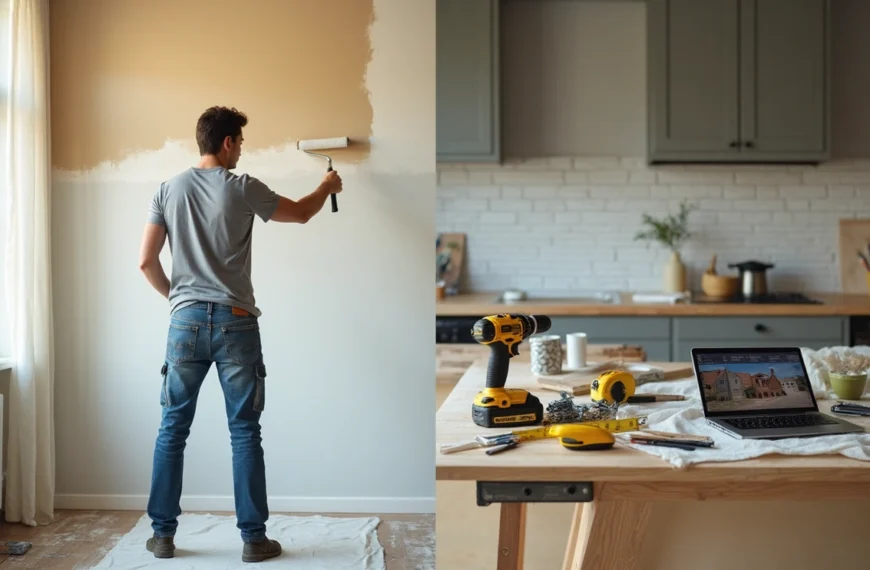
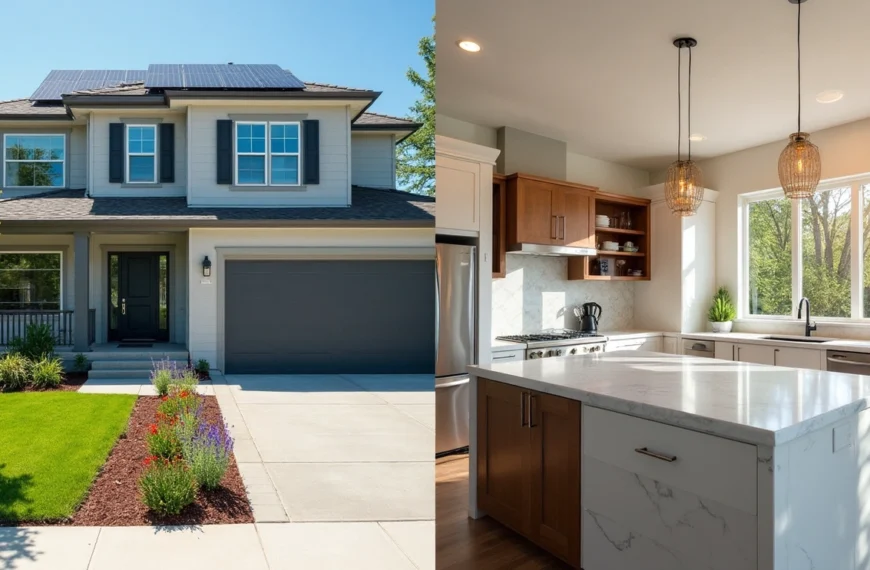
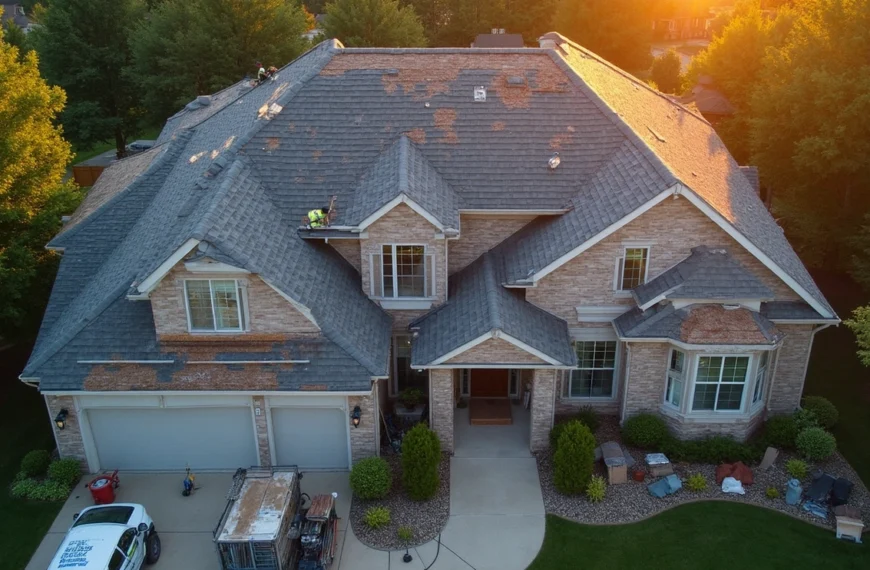

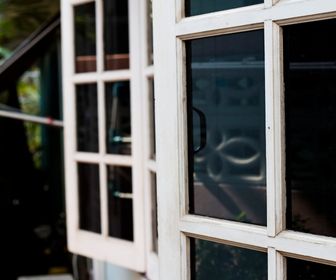




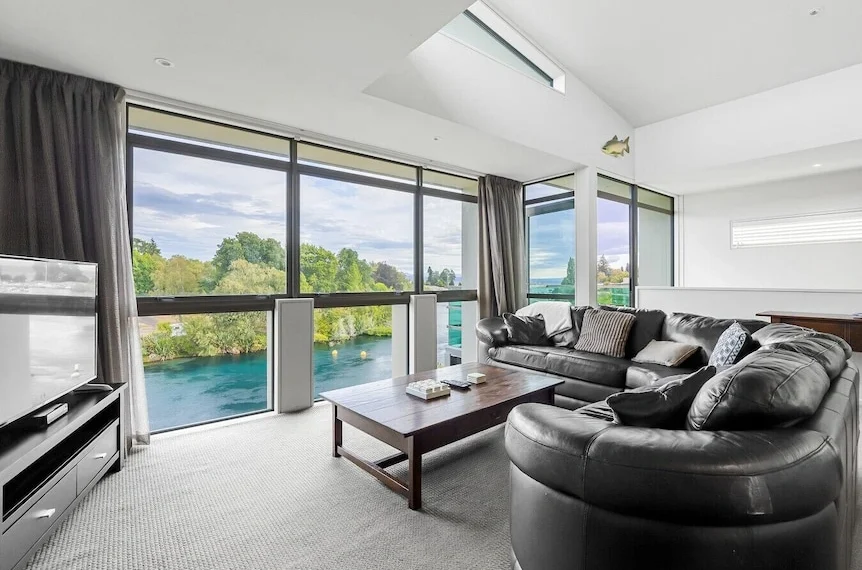



![No Win No Fee Lawyers: The Hidden Truth About Settlement Cuts Legal representation through no win no fee lawyers gives clients a way to fight cases without paying anything upfront. Many clients don't know that these services take a big chunk of money after winning the case. Lawyers usually take 25% to 40% of what you win as their contingency fee. The amount lawyers take from settlements can add up fast. A $100,000 settlement means your attorney gets $30,000 if they charge a 30% fee after winning your case. Your solicitor's cut might be £10,000 from a £30,000 compensation award, based on your agreement percentage. This payment model stays pretty much the same for no win no fee lawyers in different places, though percentages can change. This piece breaks down what you need to know about contingency fee deals. You'll learn about standard fee ranges, extra costs beyond the basic fee, and times when this payment setup might not work in your favor. Smart clients should think over these money matters before signing up with a lawyer to make better choices about their legal help. What No-Win No-Fee Really Means Image Source: Express Legal Funding A no-win no-fee arrangement, also called a Conditional Fee Agreement, changes the way people get legal help. This payment approach removes the need to pay legal fees upfront and creates a partnership between clients and their attorneys. How contingency fees work No-win no-fee agreements are based on contingency fees. Lawyers get paid only when they win compensation for their clients. Most lawyers take between 25% and 40% of the final amount, based on how complex the case is and where it's filed. Lawyers take their cut after winning the case. To name just one example, see a case where a lawyer wins £30,000 in compensation with a 33% fee - they would receive £10,000. On top of that, some law firms use sliding scales where they charge less for quick settlements and more if the case goes to trial. The law requires a written agreement before any work starts. This paperwork spells out the lawyer's percentage, what costs you'll need to cover, and other key details. What happens if you lose the case The meaning behind "no-win no-fee" is clear - losing your case means you won't pay your lawyer anything. All the same, you should know about a few money-related details. You won't owe your lawyer when you lose, but some deals might make you pay for court fees, expert witnesses, or other case expenses. The other side could also ask you to pay their legal costs. Many lawyers suggest getting "After Event" insurance to protect their clients. These policies cover any costs if you lose your case, which makes the no-win no-fee setup much safer. Why lawyers offer this model Lawyers want to make legal help available to more people, so they offer these payment plans. This setup helps people who don't have much money take legal action when they have valid claims. The payment structure motivates lawyers to work hard. They only get paid by winning cases, which pushes them to get the best results possible. Lawyers carefully assess each case before taking it on a no-win no-fee basis. They usually accept cases that have a good chance of winning, since they put in lots of time and resources without any guaranteed payment. The Real Cost: How Much Do Lawyers Take from a Settlement Image Source: Greiner Law Corp. The true cost of no-win no-fee legal representation becomes clear once we look at contingency fees. Many clients feel surprised to see a big chunk of their settlement checks going to their attorney's fees. Typical percentage ranges (25%–40%) No win no fee lawyers typically ask for 25% to 40% of the total settlement amount. Personal injury attorneys usually take 33.3% (one-third) of the awarded compensation[101]. Lawyers and clients agree on this percentage before any work starts on the case. Several factors shape the final percentage. Your chances of winning, case complexity, and the work to be done play key roles in determining the attorney's cut. Some areas have laws that cap the maximum contingency fees for specific types of cases. Sliding scale based on case complexity Law firms often use a tiered fee system that changes with the case stage and complexity. This scale rewards quick settlements while paying attorneys fairly if more work becomes needed. The fee might start at 30% if the case settles before lawsuit filing. This number could climb to 35% after filing or reach 40% if the case goes to trial. Law firms often group cases by complexity: 10%-20%: Simple cases with straightforward settlements 25%-35%: Typical personal injury cases 35% and above: Complex cases requiring extensive resources Examples of payout breakdowns These ground examples show how fees affect settlements: A $15,000 settlement with a 33.3% contingency fee.pdf) puts $5,000 in the attorney's pocket, leaving $10,000 for the client. Similarly, from a $100,000 settlement with a 33% fee, the attorney gets $33,000 while the client receives $67,000[102]. Complex cases tell a different story. A $100,000 settlement with a 30% fee plus $5,000 in extra costs leaves $65,000 for the client after all deductions. These fees substantially change the client's final payout. Hidden Costs You Might Not Expect Image Source: Nelson Personal Injury Lawyers Beyond percentage-based fees, clients often feel surprised by extra costs that can reduce their final compensation by a lot. These hidden costs show up in the fine print of no-win no-fee agreements. You should think over these details before signing. Court filing and expert witness fees Legal proceedings come with unavoidable court filing fees. These charges differ by jurisdiction. They usually range from $30 for small claims to several hundred dollars for complex civil lawsuits. Expert witnesses can be expensive, with hourly rates ranging from $150 to $1,000 based on their credentials and testimony complexity. Expert witnesses charge more for court appearances than consultation work because of added pressure and prep time. Clients might still need to pay experts for their prep work even if the case settles before trial. Medical report and investigation costs Medical documentation is a vital part of many legal claims. These costs include fees to release medical records, create specialized reports, and prepare documents. Investigation costs cover evidence gathering, police reports, witness interviews, and other fact-finding work needed to build a strong case. Of course, some firms say they'll cover these expenses upfront, but clients don't completely avoid these costs. When these costs are deducted from your compensation Law firms take these expenses from the settlement amount before they calculate their percentage fee, though each firm handles this differently. Some lawyers subtract these costs after figuring out their contingency fee, which changes how much money clients end up with. Most firms pay case-related costs during the process and get their money back from the settlement. The defendant usually pays most simple legal costs and disbursements in successful cases, but not always everything. Insurance protects clients from costs in unsuccessful claims at many law firms, but this protection isn't guaranteed. Clients should review their agreements carefully since they might still need to pay specific expenses even if they lose their case. When No-Win No-Fee Might Not Be the Best Option Contingency fee arrangements give many people access to justice. However, this payment model doesn't always work in a client's best interests. Knowing these limitations helps clients make better decisions about their legal representation. Cases with unclear liability Lawyer no win no fee arrangements work best in cases where fault is clear. We assessed the probability of success before taking contingency cases. Lawyers might turn down cases if there isn't enough evidence of the other party's negligence or if liability isn't certain. Cases with multiple responsible parties create more challenges. The situation gets complicated fast when several parties share liability. Lawyers are less likely to take these cases on contingency. They need to be confident they can prove the other party's negligence before accepting a case. Low-damage or low-payout claims Small claims often don't work well with the contingency model, even with real injuries. Cases that have minimal injuries or limited financial damages might not bring enough compensation to cover legal costs. The potential settlement needs to be big enough to pay for investigations, witness interviews and court fees. Personal injury lawyers often turn down cases where the "compensation potential" is too small. This doesn't mean the claim isn't valid - it just means the economics don't add up for a contingency arrangement. Situations where hourly billing may be better Hourly billing has clear advantages in certain cases. Clients see exactly what they're paying for - every hour worked and task completed. This model works well for cases that need lots of attention but don't have clear financial outcomes. Complex litigation with opposing parties works better with hourly billing and a retainer fee. Clients have more control over their case and don't feel pressured to settle quickly. Cases that need extensive preparation but have uncertain outcomes fit the hourly model better. Lawyers can spend the time needed without worrying about contingency limits. This approach often leads to better representation, especially for complex legal issues that need special expertise. Conclusion Understanding the Full Picture Before You Sign No-win no-fee arrangements offer legal representation without upfront costs. Of course, this seems attractive at first glance. In spite of that, you need to think about how these agreements can affect your final compensation. Legal fees usually range from 25% to 40% of your settlement - but that's just the start. You'll face more deductions like court filing fees, expert witness costs, and charges for medical documentation. What looks like a "free" service ends up taking a big chunk of your compensation to cover legal expenses. These arrangements work best in specific situations - cases with obvious liability, substantial damages, and solid evidence. If you have a low-value claim or complex liability issues, traditional hourly billing might serve you better. Without doubt, you should ask for clear explanations of all possible costs before signing anything. Read the fine print closely, especially when you have to deal with expenses in unsuccessful cases. Ask to see sample settlement breakdowns that show all deductions. This helps you picture what you might actually take home. Your choice to go with a no-win no-fee arrangement depends on your situation. This model helps if you don't have money to pursue valid claims. But if you have a strong case and enough funds, other fee structures might let you keep more of your compensation. Whatever payment model you choose, knowing exactly how much lawyers take from settlements helps you make better decisions. This knowledge lets you approach legal representation with real expectations and better control over your money. FAQs Q1. What percentage of a settlement do no-win no-fee lawyers typically take? No-win no-fee lawyers typically charge between 25% to 40% of the final settlement amount as their contingency fee. The exact percentage often depends on the complexity of the case and the stage at which it is resolved. Q2. Are there any hidden costs in no-win no-fee arrangements? Yes, there can be additional costs beyond the lawyer's percentage fee. These may include court filing fees, expert witness costs, medical report expenses, and investigation costs. These expenses are usually deducted from the settlement amount before or after the lawyer's fee is calculated. Q3. What happens if I lose my case in a no-win no-fee arrangement? If you lose your case, you generally won't have to pay your lawyer's fees. However, you might still be responsible for certain expenses like court costs or the opposing party's legal fees. Many lawyers offer insurance to protect clients from these potential costs in case of an unsuccessful claim. Q4. When might a no-win no-fee arrangement not be the best option? No-win no-fee arrangements may not be ideal for cases with unclear liability, low-value claims, or complex legal issues requiring extensive preparation. In these situations, traditional hourly billing might be more appropriate and potentially more cost-effective for the client. Q5. Can I negotiate the percentage a lawyer takes from my settlement? Yes, the contingency fee percentage is often negotiable. It's typically agreed upon and formalized in writing before the lawyer begins working on your case. Don't hesitate to discuss the fee structure with your lawyer and ask for a detailed breakdown of potential costs and deductions.](https://consumersweek.com/wp-content/uploads/2025/06/No-Win-No-Fee-Lawyers-The-Hidden-Truth-About-Settlement-Cuts-870x570.webp)
